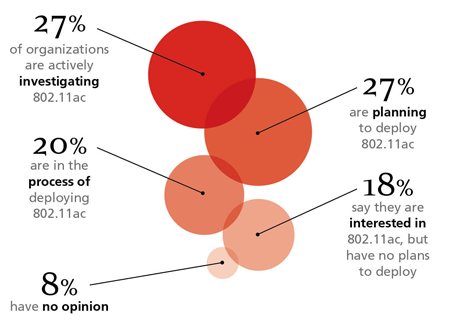Governments Roll Out Wi-Fi in Libraries, Buses and Parks
About seven years ago when Wi-Fi came to the libraries of Central and Western Massachusetts, patrons were so excited that they would sit in the parking lots and use the service as a hotspot.
"Keep in mind that many of the communities we serve are fairly rural," says Sue Ciani, network manager for Central/Western Massachusetts Automated Resource Sharing (C/W MARS), a consortium of 150 libraries in the Bay State. Founded in 1982, the consortium enables patrons to borrow from a combined collection of more than 6 million items.
Ciani adds that there weren't many opportunities for people in that part of the state to use public Wi-Fi. But today, it's gotten to the point that so many devices have proliferated that people expect the libraries to have it, and C/W MARS aims to deliver it.
"There's a whole category of people who can't afford the Internet," says Anne Savoie, systems and network supervisor for C/W MARS. "Many of our libraries will let patrons check out a notebook computer, which helps them look for a job and complete a resume," Savoie says. "Plus, there are many salespeople who like to use our Wi-Fi service to do research when they're on the road."
Ciani says C/W MARS began offering Wi-Fi in 2007, when patrons at five or six of the libraries started asking for the service. "Over the past few years, C/W MARS has upgraded the access points in libraries to 802.11n. The consortium deployed a mix of Cisco Aironet 1131 and 1602i APs. Small libraries get one or two APs, while larger buildings get up to six, Ciani says. On the back end, C/W MARS upgraded to Cisco 1941 routers.
The estimated number of global network connections by 2017, up from 12 billion in 2012
SOURCE: "Visual Networking Index Forecast" (Cisco Systems, May 2013)
"Many of our buildings are quite old, so doing cabling is difficult," adds Savoie. "The ability for us to go wireless in the libraries and run APs so we can increase bandwidth and handle more devices is kind of a win-win for everybody."
When Dorene Miller came on board in 2012 as director for the Palmer Public Library in Palmer, Mass., one of the first projects on her list was improving the library's Wi-Fi network. She says the network was first installed in the mid-2000s. By 2012, service was intermittent and sometimes didn't work at all.
"C/W Mars was one of the first groups I called once I realized that we had to upgrade the Wi-Fi network," Miller explains. "Anne Savoie came out here with Eric Blais, one of her technical people, and did a site survey."
Along with a streamlined Wi-Fi network, C/W MARS maintains the network and makes service calls when the network is down. Palmer Public Library also receives monthly usage reports, which helps Miller more effectively explain its needs to the town or when applying for grants.
"We've been getting an average of 440 users per month," she says. "In the past, we had no idea what the usage was. Now, we have a baseline."
Bob Laliberte, a senior analyst for the Enterprise Strategy Group, says governments are making progress rolling out Wi-Fi in public spaces. "With all the government cutbacks, one might think that municipal Wi-Fi wouldn't be a top priority," Laliberte says. "But it certainly makes sense to offer it at a place where people go to access information. By offering Wi-Fi, a library can show that it's keeping up with the times and may wind up attracting more people to come use its services."
Buses Are Getting Smarter Too
King County, Wash., now offers Wi-Fi service to bus riders on 113 60-foot RapidRide line buses, which equates to almost 8 percent of the county's fleet.
Greg Debo, IT project manager, says county surveys found that nearly 80 percent of riders have some form of mobile device. "We service an area that includes Redmond and Bellevue [the center of the Microsoft campus], so there's no question that it's a service that a lot of people are taking advantage of," says Debo. "Whether it's just to socialize or check work email, people can use the time they ride on the bus more productively."
The Next Wave: 802.11ac

Source: "Campus & Wireless Research Report" (Enterprise Strategy Group, December 2013)
Now that many governments are up to speed with 802.11n, it's time to consider 802.11ac. The emerging gigabit Wi-Fi standard promises speeds of up to 1.3 gigabits per second, though lab tests found consistent speeds in the 400- to 800-megabit-per-second range.
Ridership has increased steadily since Wi-Fi was launched last summer, Debo says. What started slowly in June with 500 users has steadily increased. Usage was expected to exceed 6,000 in November.
The wireless gear is housed in a cabinet behind the driver's seat. King County uses CradlePoint machine-to-machine IBR600LE-PWD wireless routers with a 2.4-gigahertz antenna. Wi-Fi power runs off the terminal power strips in the back of the cabinet, and the wireless LAN fires up when the bus driver turns on the engine.
Debo says the CradlePoint routers with the latest firmware can handle up to 64 simultaneous Wi-Fi connections. To establish an Internet connection, the technicians place a Verizon SIM card into the router to connect to the carrier's 4G LTE network.
CradlePoint also offers a cloud-based management portal called WiPipe Central, which lets the King County IT team patch and monitor the network to ensure there's no interference. "We want the riders to have a great experience riding the RapidRide lines, and Wi-Fi in Seattle is here to stay," says Debo.
The Great (Connected) Outdoors
Raleigh, N.C., has offered public Wi-Fi based on Cisco routers for the past five years. CIO Gail Roper says the city uses the Wi-Fi for parks and recreation, including festivals and sporting events.
"We started in the downtown core and worked our way out," says Roper. "A considerable amount of our vendors use the service during outdoor festivals, and we also offer Wi-Fi at the convention center."
Roper says public Wi-Fi fits in well with Raleigh's "live, work, play" philosophy. Plans are in the works to blanket the city with 125 square miles of dark fiber, some of which will be used for Wi-Fi. "We're looking to expand this over time," she says, adding that the city encompasses 148 square miles, so it's an extensive rollout. "Wi-Fi has become the new norm. People just expect to have it, like a utility."









